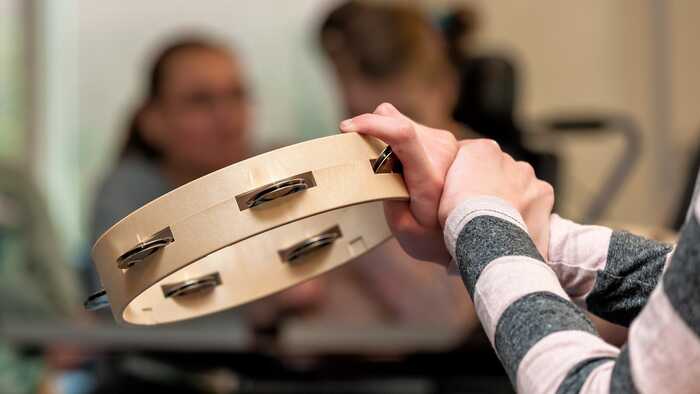Early Neurologic Music Therapy intervention critical for young people with brain injuries
The role of Neurologic Music Therapy (NMT) becomes even more critical for young children starved of oxygen at birth as evidence shows the injured brain can recover function, according to Chroma. A child’s brain structure changes as a result of illness or injury and research shows that the injured brain can recover function and the ability to respond to music can remain intact, even when those functions of the brain are damaged.
Improving speech, language and communication
For young people who have suffered a brain injury—either at birth, acquired, trauma-related or as a result of a condition such as cerebral palsy or epilepsy—NMT uses specific, age-appropriate techniques to help maintain or improve skills such as speech, language and communication—as well as motor and cognition skills. In the case of children with an acquired brain injury, NMT techniques are typically focused on a child’s development and enabling them to acquire functional skills for the first time.
Lucy Collings Pettit, Neurologic Music Therapist at Chroma
“Babies who are starved of oxygen at birth can suffer Hypoxic—Ischemic Encephalopathy (HIE). In such an event, a child’s brain injuries can result in developmental and cognitive impairments. It is worth implementing Neurologic Music Therapy interventions when children are young since neuroplasticity can be greatest at an early age when the brain changes a great deal. For children receiving NMT interventions, they are often yet to acquire skills and you are essentially training the brain to learn new skills—rather than re-training or regaining lost skills.
“Children usually find it incredibly hard to ignore music and engage positively with their sessions. Children with a neurological condition are able to learn skills, often for the first time, through the use of music as a highly motivating means. It can have the greatest positive impact on their quality of life.”
Helping children with improving functional movement
Interventions are selected based on what will achieve the most functional and relevant educational outcomes. Techniques in the school setting include Developmental Speech and Language Training Through Music (DSLM), whereby children are immersed in musical experiences such as singing songs. This can help children to develop new learning patterns and functional language. Songs are carefully selected by the therapist and tailored to meet the functional needs of the individual child. Songs sung need to be age-appropriate and enjoyable for the child—with positive engagement crucial to a successful outcome.
Rhythmic auditory cues can help children with improving functional movement—such as gait, strength and range of motion (ROM). Through using Rhythmic Auditory Stimulation (RAS), gait can become more even in tempo and children can look to improve balance and increase their walking speed.
Another NMT technique employed for young people is Therapeutic Instrumental Music Performance (TIMP), which uses rhythmic cueing in focusing on building children’s motor skills. NMT requires close liaison and multi-disciplinary working with other health professionals—including physiotherapists and speech and language therapists, drawing upon their expertise and enhancing children’s goals in specific domains.
Lucy Collings Pettit continues...
“Babies who are starved of oxygen at birth can suffer Hypoxic—Ischemic Encephalopathy (HIE). In such an event, a child’s brain injuries can result in developmental and cognitive impairments. It is worth implementing Neurologic Music Therapy interventions when children are young since neuroplasticity can be greatest at an early age when the brain changes a great deal. For children receiving NMT interventions, they are often yet to acquire skills and you are essentially training the brain to learn new skills—rather than re-training or regaining lost skills.
“Children usually find it incredibly hard to ignore music and engage positively with their sessions. Children with a neurological condition are able to learn skills, often for the first time, through the use of music as a highly motivating means. It can have the greatest positive impact on their quality of life.”
Posted by Nicola Kelly on October 6th 2021


